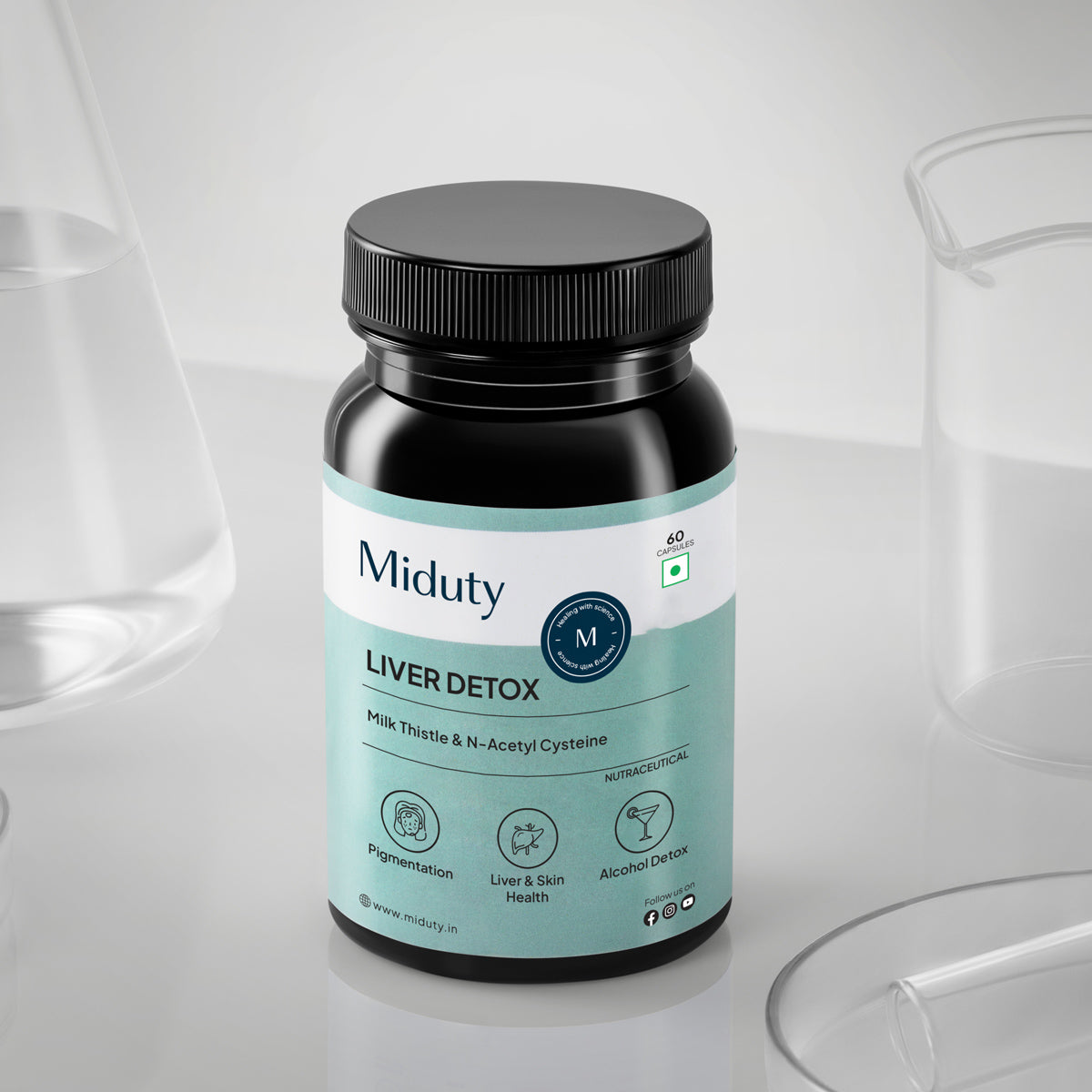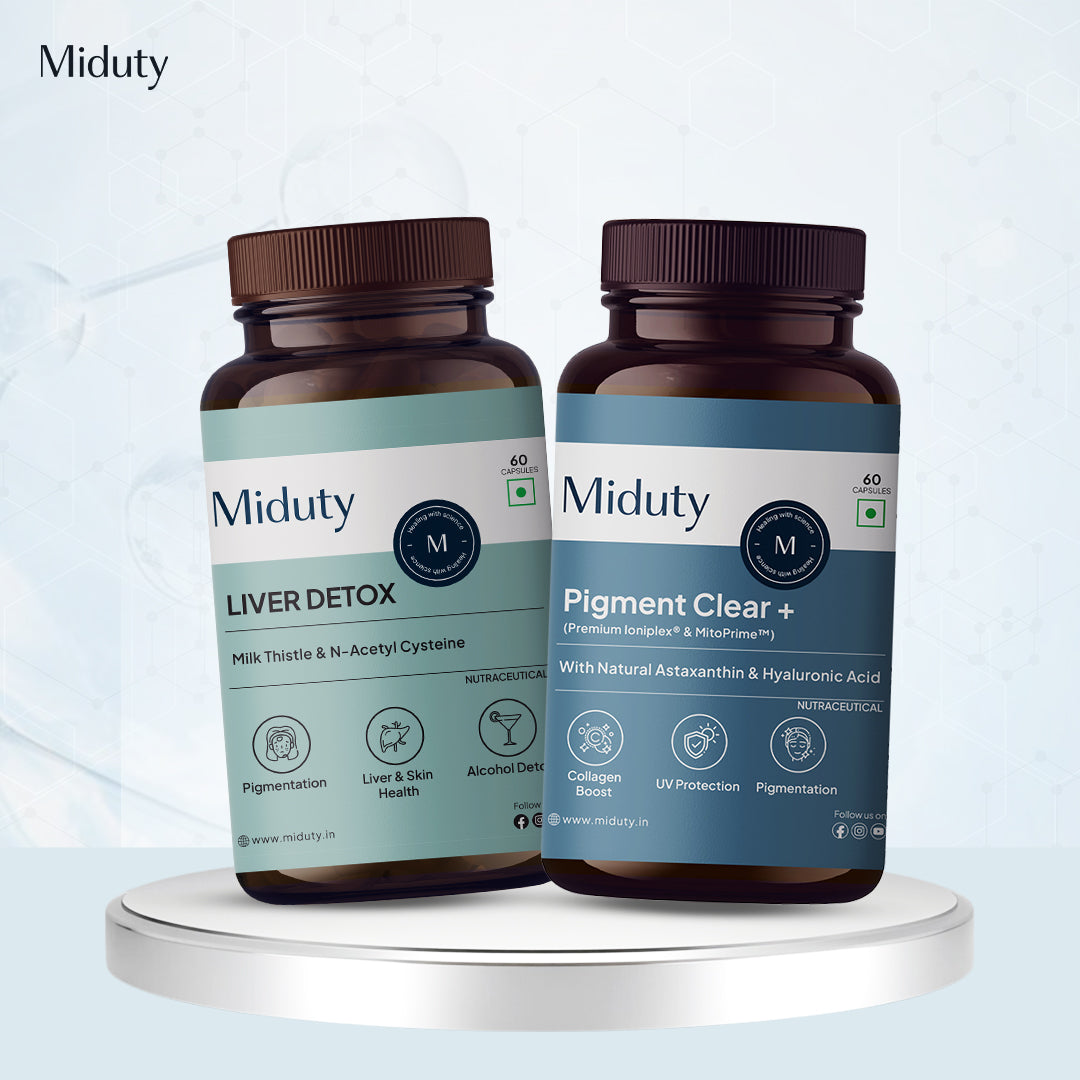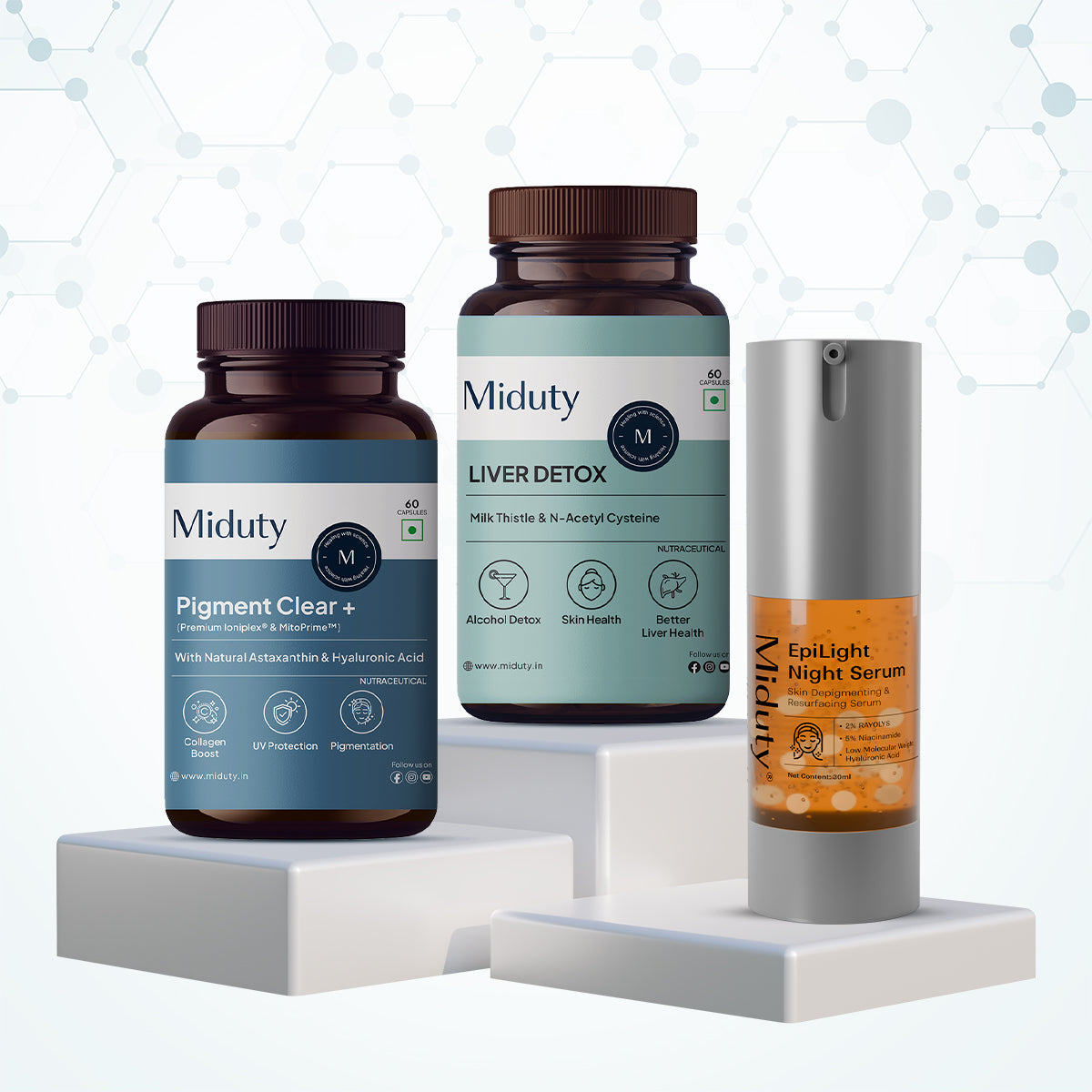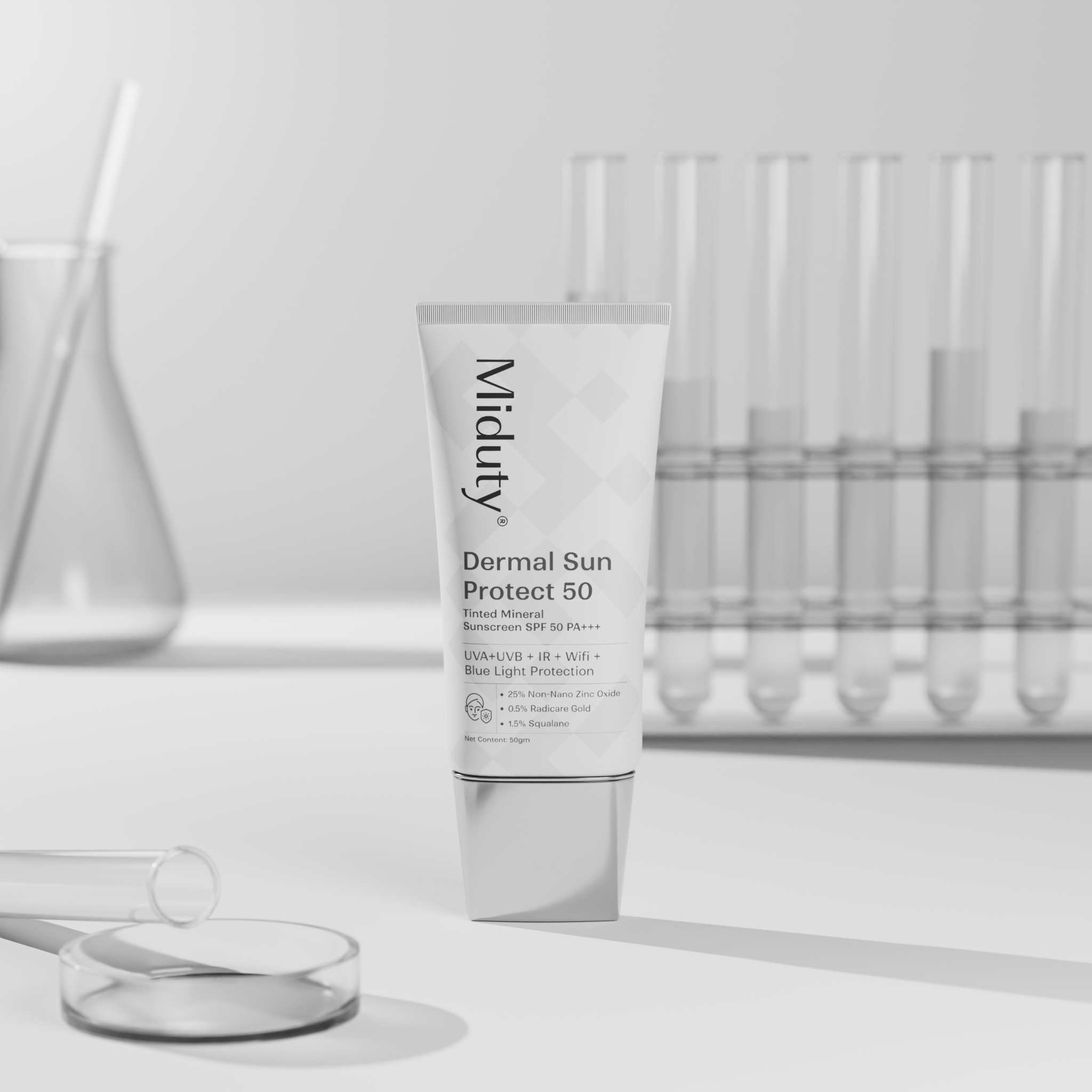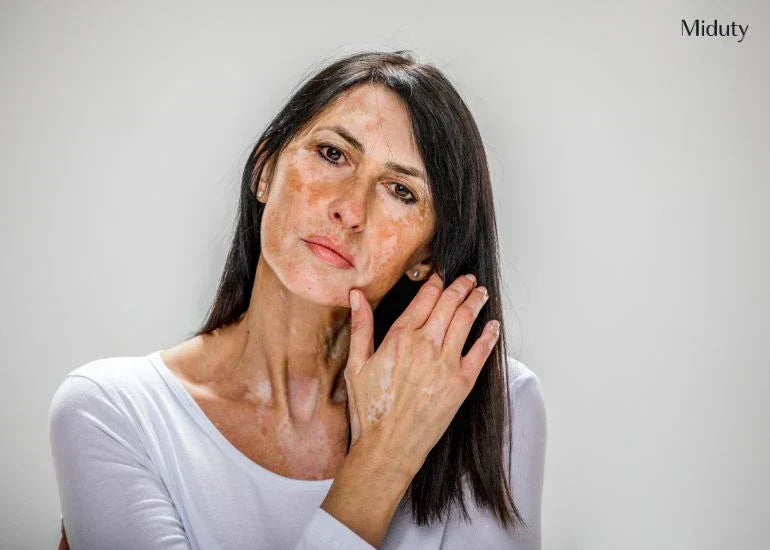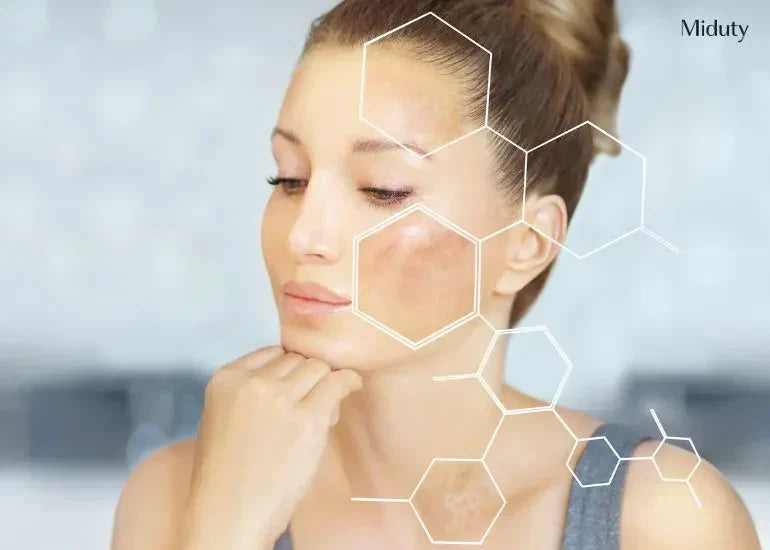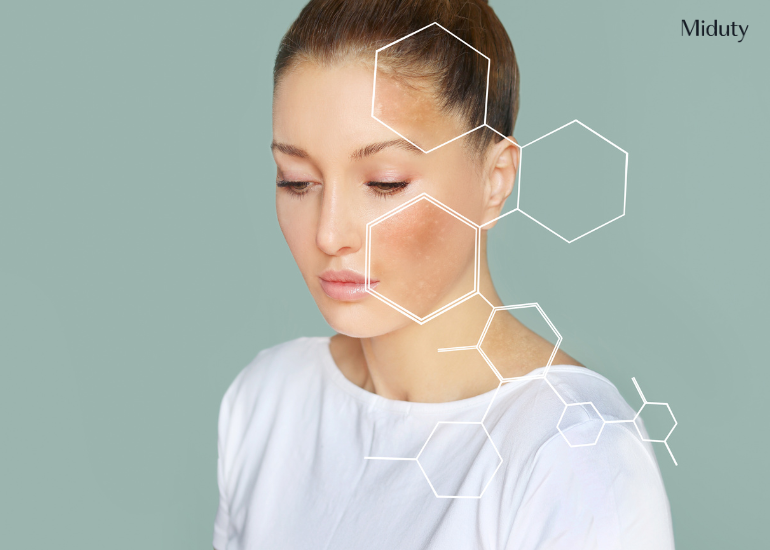
What is Melasma: Types, Causes, Symptoms, and Treatment Options
If you've noticed stubborn brown or grayish patches on your cheeks, forehead, or upper lip—especially ones that get darker in the sun—you may be dealing with melasma. This common skin condition isn't harmful, but it can be frustrating and affect your confidence.
The good news? With the right habits, products, and treatments, melasma can be managed and noticeably improved. Let's break down what it is, why it happens, and the best ways to treat it.
Key Takeaways
1. Melasma loves the sun—so your SPF should love you back. Daily, tinted sunscreen is your first and strongest line of defense.
2. Gentle wins the race. Harsh scrubs and strong acids can make pigmentation worse, so treat your skin with care.
3. Inside-out care matters. Antioxidant-rich foods and targeted supplements like NAC, milk thistle, and omega-3s can support clearer skin.
4. Consistency is your secret weapon. Skincare routines and sun protection only work if you stick to them daily.
5. Patience pays off. Melasma fades over weeks to months, but with the right plan, you can keep it from stealing the spotlight.
What is Melasma?
Melasma causes dark patches to appear on the skin, usually in areas that get the most sun exposure—like the face. It's more common in women, especially those with medium to darker skin tones, and it often appears symmetrically on both sides of the face.
It's not contagious, painful, or dangerous, but it's known for being persistent. Without proper care, it tends to come back—especially after sun exposure.
Types of Melasma
Melasma can vary based on how deep the excess pigment sits in the skin. Knowing the depth helps determine how quickly it may respond to treatment and which methods are most effective.
1. Epidermal Melasma – Found in the uppermost layer of the skin, usually lighter brown in color and responds well to topical treatments.
2. Dermal Melasma – Located deeper in the skin, often appearing as bluish-gray patches and is more resistant to treatment.
3. Mixed Melasma – A combination of both epidermal and dermal pigmentation, making it the most common but also more challenging to treat.
Causes of Melasma
Melasma develops when the skin produces excess melanin, leading to dark, patchy pigmentation. Its causes are usually a mix of hormonal, environmental, genetic factors, or thyroid disorders can all contribute to its development. That's why melasma is often called the "mask of pregnancy."
1. Hormonal changes: Pregnancy, birth control pills, hormone therapy, and thyroid disorders can trigger melasma.
2. Sun exposure: Ultraviolet (UV) rays overstimulate melanocytes, leading to excess melanin production.
3. Genetics: A family history of pigmentation issues increases the risk.
4. Medications: Certain drugs that cause photosensitivity can worsen pigmentation.
5. Skin irritation: Harsh cosmetics or treatments may trigger melasma in sensitive individuals.
In short, melasma develops when multiple factors—especially hormones, sunlight, and genetics—combine to overstimulate pigment production in the skin.
Symptoms of Melasma
Melasma does not cause any physical discomfort like pain or itching; its signs are purely visible on the skin. The main symptom is the appearance of dark, discolored patches that are usually brown, gray-brown, or bluish-gray in color.
1. Location: Commonly seen on the cheeks, forehead, bridge of the nose, chin, and above the upper lip. It may also appear on the neck or forearms in people with high sun exposure.
2. Pattern: The patches are usually symmetric (appear on both sides of the face).
3. Texture: The affected skin feels normal—no scaling, swelling, or redness.
In short, melasma's hallmark symptom is symmetrical, flat, brownish pigmentation on sun-exposed areas of the face.
How It's Diagnosed?
Melasma is diagnosed mainly through a dermatologist's clinical evaluation. The doctor reviews your medical history, including sun exposure, hormonal changes, medications, and family history, and then examines the skin for its typical presentation—brown or gray-brown patches, usually in a symmetrical pattern on the face.
In some cases, a Wood's lamp (UV light) is used to determine whether the pigmentation is superficial or deeper in the skin. Dermatoscopy can further clarify patterns, while a skin biopsy is rarely needed and only done if another condition is suspected. In most situations, diagnosis is straightforward and based on appearance and history alone.
Who Is Most at Risk?
Melasma can affect anyone, but it's most common in:
- Women between 20 and 50 years old
- People with medium to darker skin tones
- Those with a family history of melasma
- Pregnant women ("mask of pregnancy")
- People who use hormone-based birth control or hormone therapy
Treatment Tips for Melasma: Daily Skincare Habits That Help
Melasma is stubborn, but the right everyday habits can make a huge difference. Think of these as your foundation—consistent, simple actions that protect your skin from triggers and give treatments the best chance to work. Skipping them, even occasionally, can undo weeks of progress.
1. Protect From Sun and Heat
Melasma is extremely sensitive to light—both UV and visible light—and even heat. Apply a broad-spectrum SPF 30 or higher every single morning, whether you're inside or outside. If you're outdoors for long periods, reapply every 2 hours.
- Use tinted sunscreen with iron oxides to block visible light, a major melasma trigger.
- Wear wide-brimmed hats and sunglasses for extra shade.
- Avoid overheating your skin with hot showers, saunas, or intense heat exposure, as it can make pigmentation worse.
2. Build a Gentle, Consistent Skincare Routine
Your skincare routine should support skin barrier health while targeting pigmentation. Avoid harsh scrubs and overly strong treatments that can cause irritation and inflammation.
Morning:
- Gentle Cleanser – cleans without stripping skin
- Antioxidant Serum – Vitamin C or niacinamide to protect from oxidative stress
- Lightweight Moisturizer – hydrates without clogging pores
- Tinted SPF 30+ – your non-negotiable daily shield
Evening:
- Cleanser – removes makeup, sunscreen, and dirt
- Retinoid (adapalene or retinol) – promotes skin cell turnover (start 2–3 nights a week, then increase)
- Brightening Serum – azelaic acid, kojic acid, tranexamic acid, or arbutin to reduce melanin production
- Moisturizer – locks in hydration overnight
Consistency is key here—most ingredients for melasma take weeks or even months to show results, so stick with your routine.
3. Avoid Irritation Triggers
Anything that inflames or irritates your skin can worsen melasma. Skip rough exfoliants, very strong acids if your skin isn't used to them, and fragranced skincare that may cause sensitivity.
4. Support Your Skin from the Inside Out
Pair your topical care with a balanced diet rich in antioxidants.
- Eat plenty of berries, leafy greens, nuts, and seeds.
- Include omega-3 sources like salmon, chia seeds, or flaxseed oil.
- Stay hydrated throughout the day to keep skin plump and healthy.
Supplements That May Help Melasma
Certain supplements can work alongside topical treatments to help calm inflammation, improve skin repair, and regulate pigment production. They're not quick fixes, but they can support results.
1. Vitamin C – Antioxidant that helps block excess melanin. It also supports collagen production, improves overall skin brightness, and protects against free radical damage caused by UV rays and pollution.
2. Vitamin B12 - Essential for healthy cell function and pigment balance. Deficiency can lead to skin discoloration, so maintaining adequate levels helps support normal melanocyte activity and even skin tone.
3. Iron - It supports oxygen delivery to skin tissues and is important for healthy pigment production. Low iron levels may contribute to uneven skin tone and slower recovery from PIH.
4. Milk Thistle – Supports liver function and may improve skin clarity. Its active compound, silymarin, has antioxidant and anti-inflammatory properties that can help protect skin cells from damage and reduce pigmentation triggers.
5. NAC (N-acetylcysteine) – Boosts glutathione, a natural skin-brightening antioxidant. NAC also helps the body combat oxidative stress and supports detoxification processes that may indirectly improve skin tone.
6. Glutathione – Helps reduce oxidative stress and lighten pigmentation. It works by interrupting melanin synthesis and is often used in both oral and topical forms to promote a more even complexion.
7. Zinc – Supports skin healing and reduces inflammation. It also plays a role in regulating oil production and can help prevent post-inflammatory hyperpigmentation after acne or irritation.
8. Omega-3 Fatty Acids – Found in fish oil and flaxseed, they strengthen skin cells and calm inflammation. Omega-3s also help maintain skin's moisture barrier, which supports healing and reduces environmental damage that can worsen melasma.
Conclusion
Melasma may be stubborn, but it's far from untreatable. With the right mix of daily sun protection, gentle yet effective skincare, and targeted treatments, those dark patches can fade and your skin tone can look more even. Patience is key—melasma takes time to improve, and maintenance is just as important as the initial treatment. By understanding your triggers, making smart lifestyle choices, and working with proven ingredients and, if needed, professional care, you can manage melasma effectively and keep it from taking center stage. Clearer, healthier skin is a long game—but it's one you can win.
Frequently Asked Questions on Melasma -
Q1. What is the main cause of melasma?
The main cause of melasma is an increase in melanin production, often triggered by hormonal changes, sun exposure, and inherited skin tendencies. Factors such as pregnancy, use of hormonal birth control, certain medications, and stress can influence hormone levels, which in turn can start or worsen these dark skin patches.
Q2. How can I remove melasma from my face?
Melasma seen as brown or grey-brown patches on the face can be improved with a mix of targeted treatments and strict sun protection. Dermatologists often begin with prescription creams containing ingredients like hydroquinone, tretinoin, or mild corticosteroids to lighten pigmentation. For deeper or stubborn patches, options such as chemical peels or laser therapy may be recommended. Daily use of a broad-spectrum sunscreen is essential, as it not only prevents melasma from worsening but also helps maintain the results of any treatment.
Q3. Is niacinamide good for melasma?
Yes, niacinamide is widely regarded as a safe and effective ingredient for managing melasma. It works well on its own or alongside treatments such as hydroquinone, chemical peels, or other dermatologist-recommended options. However, like any active skincare ingredient, it may cause mild irritation or allergic reactions in some people, so it's best to start with a patch test.
Q4. Can melasma be harmful?
Melasma is not dangerous or life-threatening. It's a harmless skin condition that appears as dark or discolored patches, and it does not raise your risk of skin cancer or cause physical damage. However, it can significantly affect a person's appearance, which may lead to reduced self-confidence and emotional distress.
Q5. Which deficiency causes melasma?
Melasma, which appears as dark or uneven patches on the face, has been linked to certain nutrient deficiencies—especially vitamin B12 deficiency. Research indicates that low vitamin B12 levels can directly contribute to the development of melasma. Additionally, iron deficiency may also play a role, as it can influence melanin production in the skin, potentially worsening pigmentation. Maintaining adequate vitamin B12 and iron levels through diet or supplementation may help reduce the risk or severity of this condition.
References


